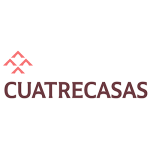Spain remains one of the largest European markets for non-performing assets – both for its non-performing loan (NPL) and real estate-owned (REO) portfolios – and is a preferred jurisdiction for international investors. The provisioning requirements of credit institutions for real estate exposures and the creation of the Spanish bad bank, Sareb, were the real catalysts for the change in mindset regarding the transfer of NPLs. All Spanish financial institutions, even the most solvent ones, accumulated large amounts of NPLs – around €300 billion ($347 billion) in total – during the real estate crisis and financial turmoil. All international credit funds and distressed investors landed in Spain several years ago and many of them set up their own asset management platforms. During those years, there was no other jurisdiction in continental Europe that could offer the opportunities and returns available in Spain (until recently, Italy).
The Spanish secured NPL market has been very active for the past five years. The average nominal amount has been €400 to €800 million, except for a couple of situations. However, more recently we have seen €30 billion NPL portfolio deals and the average amount has gone up to between €1 and €1.5 billion as evidence of this sales rush. There has been a clear acceleration in the sale of NPLs in 2018 due to several factors, including the additional capital requirements for NPLs, which means banks are prioritising these sales to reduce their balance sheets and improve their ratios. This strategy is further hastened due to the banks' fear of competition from other jurisdictions such as Italy and Greece. A total €40 billion in NPL sales are in process.
International credit funds, banks and institutional investors are the usual buyers of secured NPLs. On the other hand, Spanish banks and Sareb are the usual sellers when dealing with secured NPL portfolios. There has also been a limited number of secondary deals among funds, but this is changing and secondary sales are more frequent now. In individual situations or single names, we see other Spanish banks increasing their debt positions, or even debtors purchasing their own debt at a discount and refinancing, thanks to the participation of alternative lenders.
Spanish secured NPLs hold very attractive asset collateral and allow investors to achieve high returns, taking advantage of the fact that the real estate market continues to grow. Mortgage-secured NPLs are the most attractive for investors since they have the real estate collateral assets to recover proceeds and negotiate with borrowers, as they are generally more flexible than banks. Most of these large investors have their own local teams which, together with a sophisticated servicing industry, are assisting them to take advantage of the recovery of the real estate market in Spain and maximise returns. Even types of collateral such as urban plots are now very attractive, since development projects are booming.
The main NPL transactions deal with acquisitions of large secured NPL portfolios, and their financing through securitisation schemes are the most attractive. On the other hand, there are substantial individual pieces on sale which require specific tailor-made solutions, in particular, debt to own and enforcement situations. Also popular are acquisitions of all or a majority of the financial debt of single name Spanish companies in order to refinance or use debt- to-equity strategies.
There is still so much in the balance sheets of banks and it has taken so long for the institutions to sell the NPLs that this situation is likely to continue for a few years to come. Until now, Spanish banks have not taken an aggressive or accelerated approach in cleaning up balance sheets. According to public estimates, the secured NPLs in Spain amounted to around €300 billion, and still €100 billion remains to be sold. Sareb has been set up for 15 years, so it still has nine years to sell it all. No doubt the Spanish economic recovery and the improvement in the real estate market are helping this deleveraging process.
Investors have raised substantial capital in the past two years (sources say €300 billion) and sellers' plans to sell will continue for at least the next two years. Key factors are the good performance of the Spanish economy and the recovery of the real estate market, in particular, the residential market. Spain is for sure a preferred hunting ground for major international investors. On the other hand, most NPLs are real estate related and there is still a large number of corporate NPLs waiting on the balance sheet. Thus, we anticipate moving from property-related NPLs into the debt of small and medium-sized enterprises. This will be the next NPL wave in Spain and investors are already watching.
Sales of NPL portfolios are still booming. This will not be altered by the new Spanish socialist government. On the contrary, sale processes – both large sales and secondaries – are speeding up. However, Sareb's continuing sale transactions and strategies could be under review. The Spanish market is still providing high returns but there is a lot of competition among investors, so accurate assessment of risks when calculating collateral value and pricing should still be a priority.

|

|
Iñigo de Luisa |
Iñigo Rubio |


